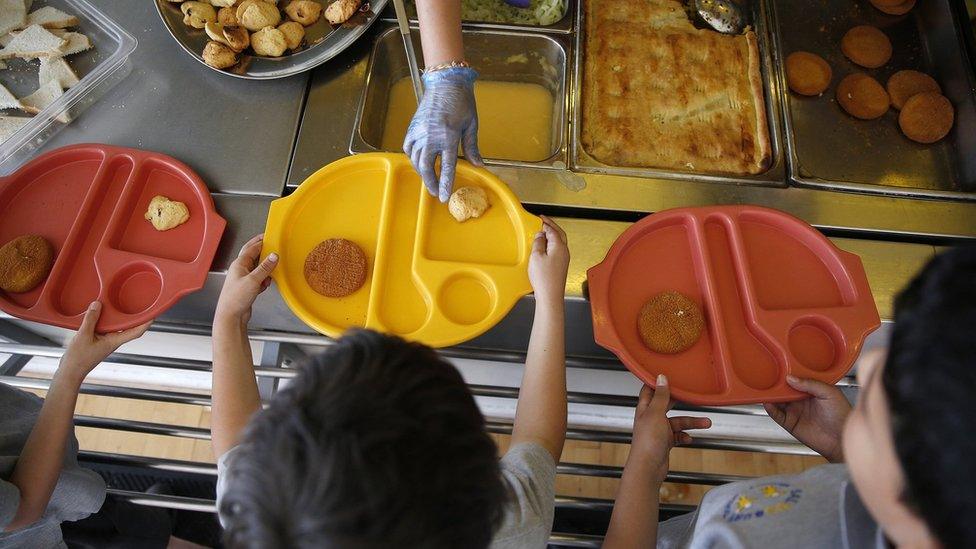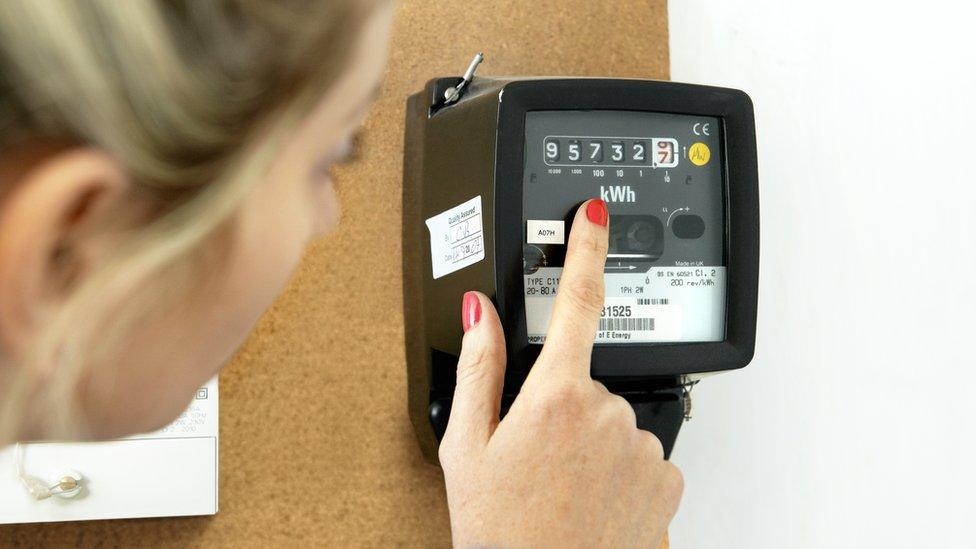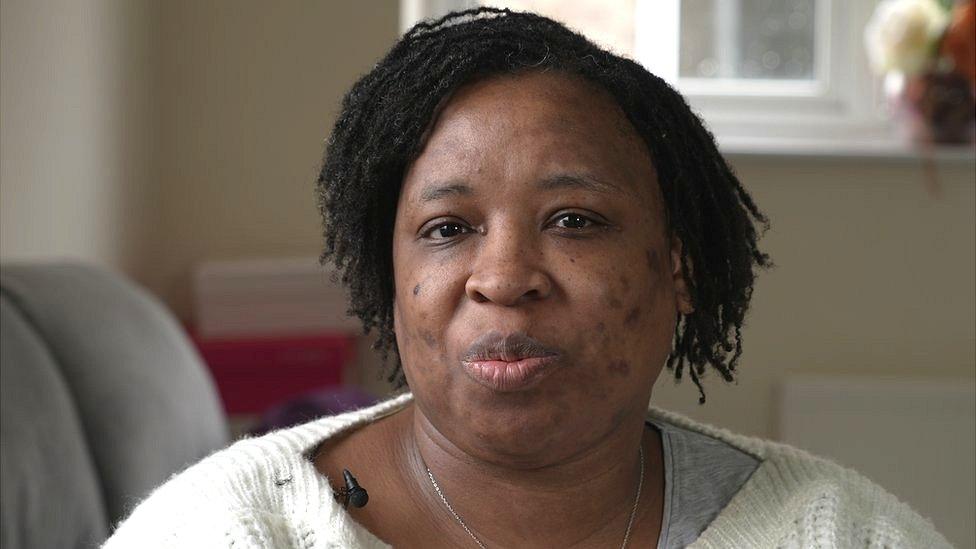Cost of living: One-in-four children in NI 'living in poverty', says charity
- Published

About one-in-four children in Northern Ireland are living in poverty, an analysis by a charity suggests.
The Joseph Rowntree Foundation (JRF) said poorer children would live for about 15 fewer years in "good health" than children from richer backgrounds.
But the JRF also said "overall poverty in Northern Ireland is the lowest of any country within the United Kingdom".
As most of its analysis is based on pre-pandemic data, it warned rising prices made the future "more worrying".
The JRF's just-published Poverty in Northern Ireland 2022 report examines rates of poverty in comparison to the rest of the UK.
It also looks at the impact poverty is having on the lives of people in Northern Ireland in a number of ways.
The JRF uses "relative poverty" as a measure of the standard of living.
An individual is judged to be in relative poverty if they are living in a household with an income below 60% of the typical UK income.
Using that metric, the JRF report suggests 330,000 people in Northern Ireland live in poverty - almost one-in-five.
That includes 190,000 working-age adults, 30,000 pensioners and 110,000 children.
The poverty rate is highest among children, with almost one in four (24%) living in poverty, according to the report.
But that was lower than the rate across the UK as a whole, where about three-in-10 children are estimated to live in poverty.
Free school meals
The JRF also found rates of poverty had fallen overall in Northern Ireland over the past decade.
That echoes pre-pandemic data from the Department for Communities (DfC) which suggested an improvement in living standards.
However, a leading paediatrician had previously warned about the impact of child poverty in Northern Ireland.
The JRF said child poverty rates were highest in the Belfast City Council area, followed by Newry, Mourne and Down, and Derry City and Strabane.
In each of those areas about 25% of children were living in poverty.
About four-in-10 children in Belfast are eligible for free school meals, compared to about 17% in the Lisburn and Castlereagh City Council area.
An existing scheme to pay for free school meals for 98,000 eligible children during all school holidays until 2025 is in doubt due to the lack of an executive.

About four-in-10 pupils in Belfast are eligible for free school meals
Relative poverty also affects the qualifications a child leaves school with.
The JRF report said the "attainment gap" at GCSE between pupils entitled to free school meals and other pupils had closed little over the past decade.
According to Department of Education (DE) statistics, 55% of pupils entitled to free school meals got at least 5 GCSEs at A* - C including English and maths in 2019-20.
But that compared in 83% of pupils not entitled to free school meals in that year.
Results have risen over the past decade for all pupils, but the percentage gap between free school meals and non-free school meals pupils has only closed by about 6% since 2012.
Using previous Northern Ireland Statistics and Research Agency (Nisra) figures, the JRF also said that "children born into the poorest areas of Northern Ireland can expect to live for fewer years in good health than children born into the richest neighbourhoods".
"Overall men born in Northern Ireland can expect to live in good health for 60 years and females for 62 years" the report said.
"For children born into the most deprived 20% of neighbourhoods, this falls to 52.5 years for women and 54 years for men."
In the least deprived areas, by contrast, women could expect to live 67 years "in good health" on average and men almost 66 years.

Rising energy prices are putting more pressure on incomes
The JRF said that overall rising work income for lower-income families and lower housing costs had led to recent reductions in poverty rates in Northern Ireland.
"But looking further forward the picture is more worrying," the report said, "with one of the most acute squeezes on living standards in recent memory - with inflation likely to run over 5% for quite some time, driven in large part by startling jumps in energy bills".
The report also said people in workless families, disabled people, carers and people from ethnic minorities were more likely to be in poverty.
The JRF said the executive could take measures on benefits, support people at risk of poverty in finding work and build more social housing to try to help tackle the problem.
Related topics
- Published15 March 2022
